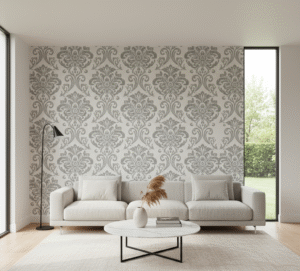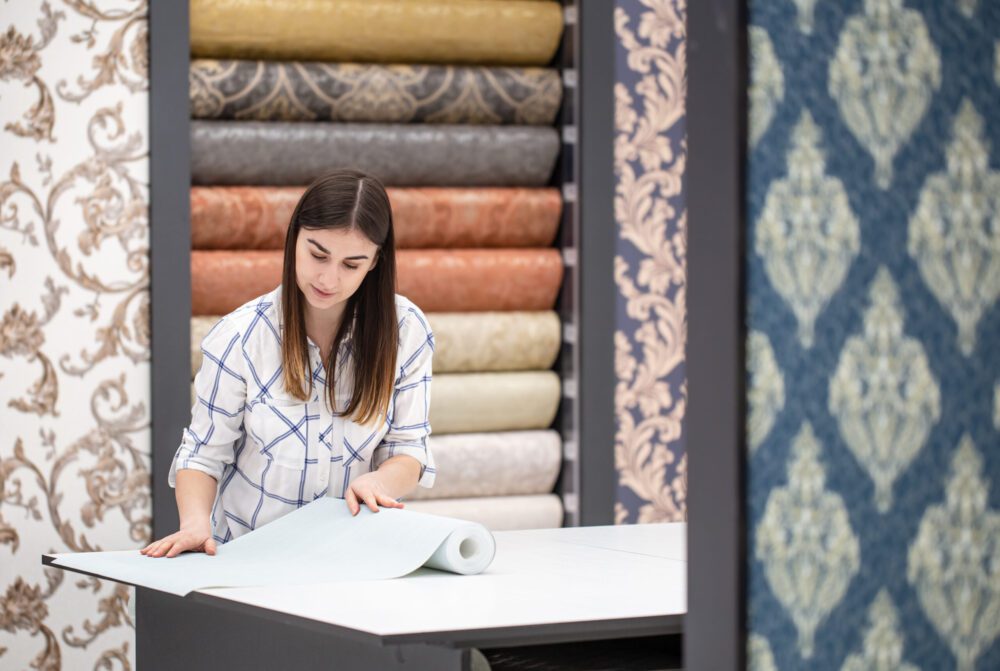The rule of three is a popular idea in interior design that states that objects organized in threes are more aesthetically pleasing, natural, and harmonious. Since they challenge our vision, odd numbers, especially three, are more intriguing to our brains than even ones. “Everything that comes in threes is perfect” or “every set of three is complete” is how the Latin phrase “omne trium perfectum” is translated. Given that our eyes are drawn to groupings of three naturally, this phrase wonderfully illustrates the rule of three in design.
The rule of three applies to different aspects of design, such as furniture arrangement, color selection, and accessorizing. When it comes to furniture arrangement, a pair of objects can feel formal, and symmetry can even feel a bit stuffy at times. Therefore, the addition of a group of three can soften the symmetry, creating a more balanced and interesting look. For instance, if you have a pair of lamps on a console table in your foyer, you can add a group of three accessories to one of the lamps to create a balanced yet asymmetrical look.
The rule of three also applies to color selection. When selecting the colors for a room, it is essential to think in threes. Three colors in a room are very complementary and soothing to the eyes. The first color is the main color; the second color is still prominent but not as much as the main color; and the third color is the accent color that you use sparingly or sprinkle here and there. Breaking it down into 60%, 30%, and 10%, the main color is 60%, the secondary color is 30%, and the accent color is 10%.
When accessorizing your home, adding some groups of three keeps things interesting. You could have three vases or three objects grouped to create a small vignette. It looks well put together and is easy on the eyes. When using a group of three accessories, sometimes a pair or cluster of accessories acts as one.
The rule of three can also be applied to bookcases. When designing a bookcase, try to create a balance between books and decorative items. Grouping books in threes is an excellent way to create balance and add visual interest. Consider mixing different sizes of books and using bookends to keep them upright. Adding decorative items such as vases, picture frames, or sculptures in groups of three can also create balance and visual interest.
Another way to apply the rule of three is by using it in your artwork. Instead of hanging one large piece of art on your wall, consider creating a gallery wall with three smaller pieces. Grouping smaller pieces of artwork creates a more interesting and dynamic display.
Here are a few tips and tricks on how you can implement this rule to elevate your interiors!
The Rule of Three in Furniture Arrangement
The rule of three can be applied to furniture arrangement as well. Instead of pushing all your furniture up against the walls, try arranging them in groupings of three. For example, you could arrange a sofa, armchair, and coffee table in a triangle formation to create a cozy seating area in your living room. Or, you could place three small tables of varying heights next to each other to create a more dynamic and interesting coffee table setup.
The Rule of Three in Artwork
When hanging artwork on your walls, consider grouping them in threes as well. For example, you could hang three pieces of art in a horizontal line above a sofa or console table. Alternatively, you could hang three pieces of art in a vertical line to create a visually striking gallery wall.
The Rule of Three in Lighting
Lighting is an essential part of interior design, and the rule of three can be applied to it as well. Instead of relying on a single overhead light source, consider using three different light sources in each room. This could include a combination of overhead lighting, floor lamps, and table lamps. Not only will this create a more balanced and visually interesting lighting scheme, but it will also allow you to adjust the lighting levels in the room to suit your needs throughout the day.
The Rule of Three in Textiles
When it comes to textiles, the rule of three can be applied in several ways. For example, you could use three different patterns in a room – one large-scale pattern, one medium-scale pattern, and one small-scale pattern. Alternatively, you could use three different textures – for example, a smooth leather sofa, a cozy wool rug, and a fluffy faux fur throw.
The Rule of Three in Plants
Plants are a wonderful way to bring life and energy into your home, and the rule of three can be applied to them as well. Try grouping three different plants in varying sizes and textures to create a mini indoor garden in a corner of your room. Alternatively, you could use three identical plants in different containers to create a more cohesive and visually appealing display.
The Rule of Three in Color
As mentioned earlier, the rule of three can also be applied to color in interior design. When selecting colors for your room, try using three different colors in a 60/30/10 ratio. For example, if your main color is a neutral beige, your secondary color could be a rich chocolate brown, and your accent color could be a bold shade of turquoise. Using this ratio will create a more balanced and cohesive color scheme in your room.
The Rule of Three in Scale
Finally, the rule of three can be applied to scale in interior design as well. When selecting furniture or decor, try using three different sizes or scales. For example, you could use a large statement piece of furniture, a medium-sized accent piece, and a small decorative object to create a more visually interesting and balanced arrangement.
Conclusion:
A key idea in interior design, the rule of three facilitates the creation of spaces that are organic, harmonious, and visually appealing. It applies to furniture placement, color scheme selection, accessorizing, bookcases, and artwork. The rule of three aids in the balance of symmetry and asymmetry, adds visual interest and creates a more balanced and interesting appearance. Applying the rule of three to your home can assist you in creating a space that is both functional and aesthetically pleasing.
Finally, the rule of threes is a simple yet effective concept that can be applied to all aspects of interior design. We create a more natural, harmonious, and visually appealing space by grouping things in threes. Whether you’re a beginner or an experienced designer, incorporating the rule of three into your design strategy will help you create beautiful and well-balanced spaces in your home.
Eximus Wallpaper’s wide selection of colors and patterns makes it easy to find the perfect wallpaper for walls to achieve your desired look and feel.Whether you’re redecorating your home or office, finding the right wallpaper can make all the difference. Luckily, Eximus, India’s leading wallpaper manufacturer, has a vast selection of high-quality wallpapers to choose from.




